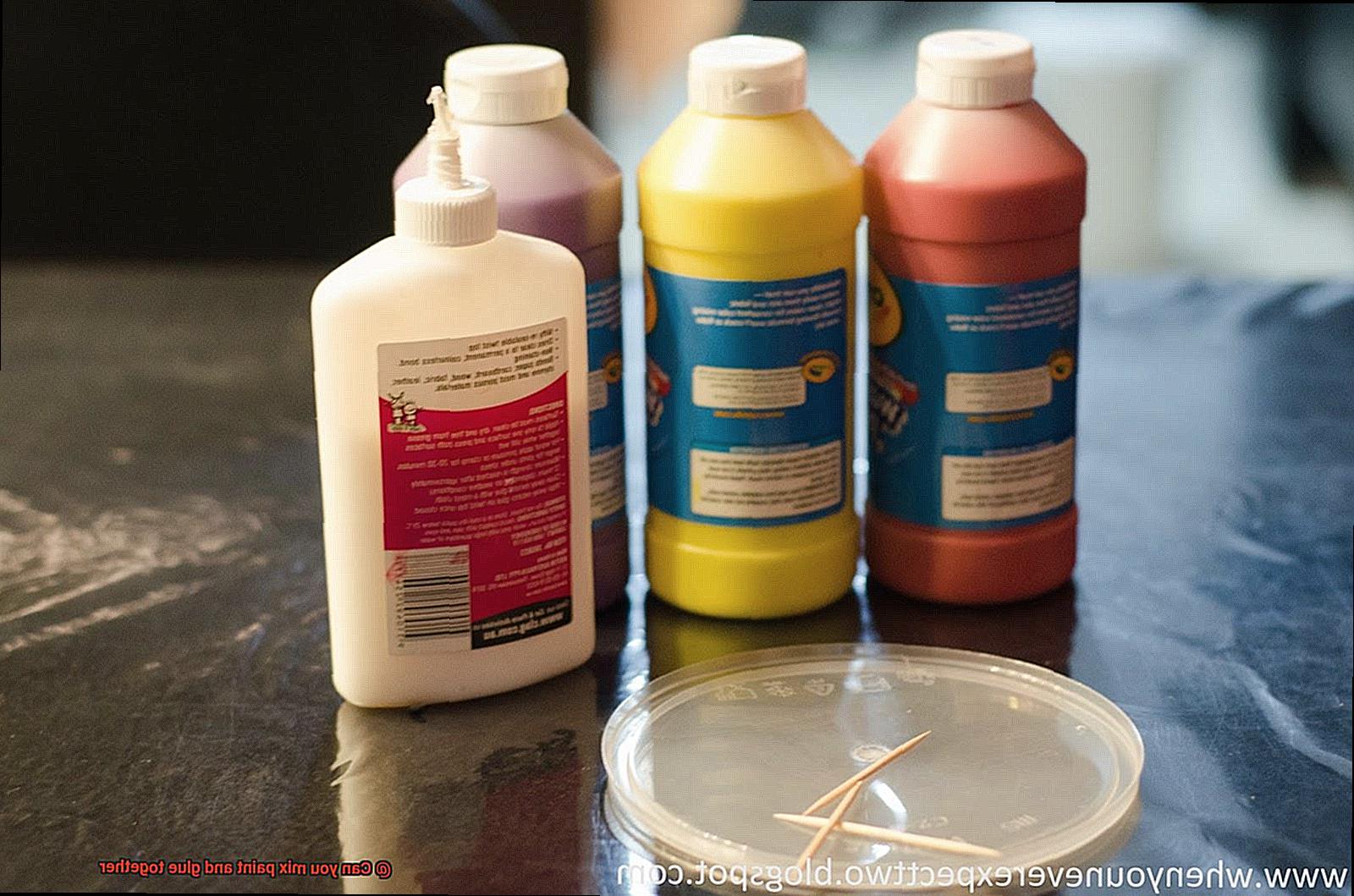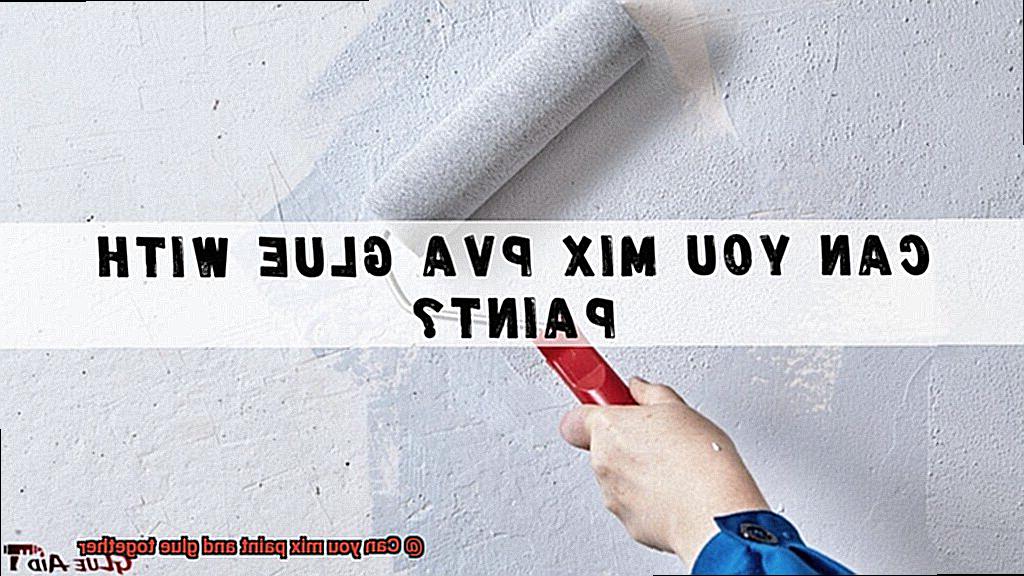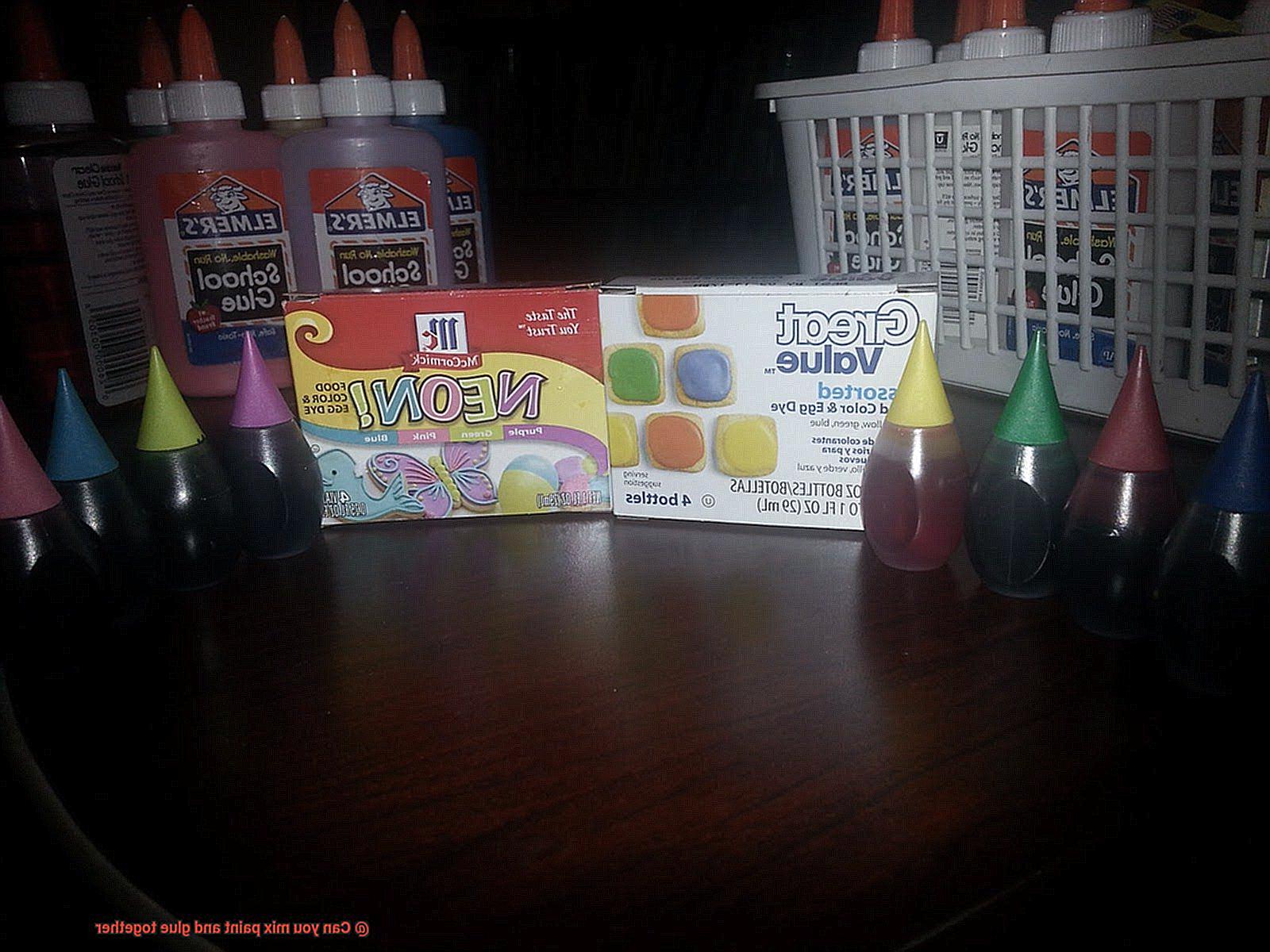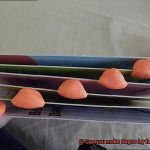Are you a DIY enthusiast who loves to play with colors and textures? Have you ever wondered if you could mix paint and glue together? It’s a question that can be both exciting and intimidating, but the answer is not as straightforward as it may seem.
Mixing paint and glue can be an adventure that requires experimentation before achieving perfection. While it might seem tempting to create a new shade or add some texture to your artwork, combining two different substances can have its consequences.
In this post, we’ll dive into the world of paints and glues, exploring the different types that can be mixed together. We’ll also weigh the pros and cons of combining these two elements while highlighting some essential tips and tricks to get your desired result.
Whether you’re looking to add a personal touch to your home decor or spruce up your artwork, this guide will provide all the information you need to mix paint and glue like a pro.
What Are Glue and Paint?
Contents
Glue and paint are versatile household items that have been used for centuries to create art and enhance the appearance of surfaces. Glue is a binding agent that joins two surfaces together, while paint adds color and protection to surfaces. Both substances have unique properties that make them ideal for different applications.
Glue can be made from natural or synthetic materials such as animal hides, bones, cartilage, PVA, or super glue. It comes in various forms such as liquid, gel, or solid and can be used in woodworking, paper crafts, school projects, and more. Glue’s adhesive properties make it the go-to product for bonding surfaces together.
Paint is a pigmented liquid that is made up of pigments, binders, solvents, and additives. Pigments provide color while binders hold the pigments together and help them stick to the surface. Solvents thin the paint to make it easier to apply, while additives improve its performance. Paint is used to add color and protection to surfaces like walls, furniture, canvas, and even vehicles.
If you’re thinking of mixing glue and paint for a project, keep in mind that the outcome depends on the type of glue and paint you use. For example, PVA glue mixed with acrylic paint creates a custom-colored glue for temporary or decorative projects like paper mache or collage. Acrylic medium mixed with acrylic paint creates a strong adhesive ideal for sealing canvas paintings or collage work. The finished product will have a durable and waterproof finish.
However, it’s important to note that mixing glue and paint might result in unpredictable outcomes that may not be desirable. The properties of these materials vary, and mixing them together might affect their performance. It’s always best to follow manufacturer instructions when mixing different materials.
Types of Glue and Paint
Mixing glue and paint may seem like a simple task, but the types of glue and paint available in the market can affect the outcome of your project. To achieve the best results, it is essential to consider the following aspects:
Types of Glue:
Various types of glue are available, including white glue, PVA glue, super glue, epoxy glue, and hot glue. White glue and PVA glue are ideal for mixing with watercolor or acrylic paints. Super glue and epoxy glue dry too quickly for mixing with paint, while hot glue may change the color and texture of the paint.
Types of Paint:
Different types of paint work differently with different types of glues. Watercolor and acrylic paints work well with white glue and PVA glue as they are both water-based. Oil-based and latex paints require a different type of adhesive.
Compatibility:
Considering the compatibility of the glue and paint you intend to mix is essential. Some types of glue may not adhere well to certain types of paint or cause the paint to become discolored or crack over time.
Adding Too Much Glue:
It is crucial to avoid adding too much glue, as it can cause the paint to become runny and lose its color intensity. This can affect the overall quality of your project.
Adding Too Much Paint:
Adding too much paint can make the mixture too thick and difficult to apply. This can also affect the overall quality of your project.
Purpose:
The purpose of your project is a crucial factor to consider when mixing glue and paint. A mixture of PVA glue and acrylic paint is best used for temporary or decorative projects such as paper mache or collage. Acrylic medium mixed with acrylic paint can result in a strong and durable adhesive that can be used as a sealant or adhesive for canvas paintings or collage work.
Can You Mix Paint and Glue Together?
Mixing paint and glue may be the answer, but before you start, it’s crucial to understand the nuances of this process. As an expert on this topic, I’ve conducted extensive research and compiled a list of essential factors to keep in mind.
When it comes to mixing paint and glue, not all combinations are created equal. Acrylic paint and PVA glue can be mixed together to create a textured surface for your project. However, oil-based paint should never be mixed with any type of glue as it can result in a sticky mess that won’t dry properly.
Another critical element to consider is the intended use of the mixture. If you’re looking to create a durable and long-lasting finish, it’s best to use a specialized adhesive rather than mixing paint and glue together. This is particularly important if your project will be exposed to wear and tear or environmental factors.
To summarize, while mixing paint and glue can be a viable solution for certain projects, it’s essential to carefully consider the materials you’re using and the intended use of the mixture. With this in mind, you’ll be able to create stunning art pieces that are sure to impress. Remember these key takeaways when mixing paint and glue:

Advantages of Mixing Paint and Glue Together
This technique has been utilized by artists and crafters for years, and it’s not difficult to see why. The benefits are truly remarkable.
Firstly, when you mix paint with glue, the glue acts as a binding agent, helping the paint adhere better to the surface you’re working on. This makes it especially useful for painting on challenging materials like wood, metal, or plastic. By adding glue to your paint, you can achieve a smoother finish with fewer brushstrokes. The result is a more professional-looking piece that’s sure to impress.
Secondly, mixing paint and glue together creates a more durable and long-lasting finish that’s less prone to cracking and flaking over time. The glue helps to create a layer that can move with changes in temperature or humidity without cracking. This means that your artwork will last longer and require less maintenance over time. It’s an excellent way to preserve your masterpiece for years to come.
Thirdly, mixing paint and glue together allows for experimentation with different textures and effects. You can adjust the ratio of paint to glue to create finishes ranging from glossy to matte. Additionally, by adding other materials like sand or glitter, you can create unique textures and patterns that are sure to catch the eye. It’s a great way to add depth and interest to your artwork.
Lastly, mixing paint and glue together is an affordable way to extend the life of your paints. If you have leftover paints that have started to dry out or become thick, adding some glue can help bring them back to life. This not only saves you money but also reduces waste by allowing you to use up all of your leftover paint.
Disadvantages of Mixing Paint and Glue Together
It may seem like a great way to save time and money, but there are some important disadvantages that you should be aware of before you start.
Firstly, achieving the right consistency and texture can be challenging. Depending on the type of glue you use, the mixture may end up too thick or clumpy, making it difficult to apply evenly. This can be particularly frustrating if you’re working on a project that requires precision and attention to detail.
Another potential issue is that the resulting mixture may not dry properly or evenly. This can lead to warping or distortion, which can ruin your hard work. Additionally, some types of glue contain harmful chemicals that can be toxic if ingested or inhaled. Working with large amounts of glue or in an enclosed space without proper ventilation could pose a serious health risk.
It’s essential to consider the potential risks and benefits before proceeding with mixing paint and glue. Opting for pre-made paint or adhesive products specifically designed for your project may be a safer option. This way, you can avoid the challenges of achieving the desired consistency and texture while ensuring that your finished product looks great and is safe for everyone involved.

Tips for Mixing Paint and Glue Together Successfully
Mixing paint and glue together can be a fun and exciting way to add unique textures and finishes to your artwork or DIY projects. However, achieving the perfect mixture can be a bit of a challenge. To help you out, we’ve compiled some tips for successfully mixing paint and glue together.
Choose the Right Glue
The type of glue you choose is crucial when it comes to mixing it with paint. PVA or white glue is a popular choice as it mixes well with paint and dries clear. However, other adhesives such as epoxy or super glue may not mix well with paint and could produce undesirable results.
Mix in Small Batches
When mixing paint and glue together, it’s best to start with small amounts at a time. This will give you more control over the consistency of the mixture and prevent it from drying out too quickly. Plus, it allows you to experiment with different ratios and additives without wasting too much material.
Start with a 1:1 Ratio
A good rule of thumb for mixing paint and glue is to start with equal parts of each. This will give you a good idea of how the mixture behaves and what kind of texture it creates. From there, you can adjust the ratio as needed to achieve your desired result.
Stir Thoroughly
To ensure that the paint and glue mixture is evenly mixed, it’s important to stir it thoroughly. Use a stir stick or palette knife to mix the two together until there are no lumps or streaks in the mixture. This will also help to prevent any clumps from forming when applying the mixture to your surface.
Consider the Surface
The surface that you’ll be applying the paint and glue mixture to is important to consider. If it’s a porous surface like paper or fabric, you may need to add more glue for better adhesion. On the other hand, if the surface is non-porous like glass or plastic, less glue may be needed. Doing a test patch beforehand can also help you determine the right consistency for your project.
Experiment with Additives
Adding other materials to the paint and glue mixture can create interesting textures and finishes. For example, adding sand or glitter can create a unique texture, while adding water can create a thinner consistency. Experimenting with different additives can help you achieve your desired result and add a personal touch to your project.
Projects to Use with Mixed Paint and Glue
Then it’s time to mix things up with paint and glue. As an expert on this topic, I can tell you that when you combine these two materials, you open the door to a world of endless possibilities.
Let’s start with a classic: slime. Mixing white glue with acrylic paint allows you to create a custom-colored slime that is sure to wow. From glittery pink to neon green, the options are endless. And if you want to take it a step further, try adding in different textures like foam beads or glitter for a truly unique slime experience.
Moving on to home decor, mixed paint and glue can transform ordinary glass bottles or jars into stunning faux stained glass pieces. The best part? You can customize the colors and shapes to match your personal style. And if you’re feeling artistic, experiment with mosaic art by gluing small pieces of paper or tile onto a surface and painting over them. This technique creates a beautiful textured effect that adds depth and dimension to any room.
For those who love making their own jewelry, mixed paint and glue can be used to create stunning pendants or earrings. By painting small wooden shapes with acrylic paint and adding a layer of clear glue over it, you can achieve a glossy finish that is both durable and eye-catching. You can also experiment with different shapes and sizes to create unique designs.
And let’s not forget about abstract art. Mixing paint and glue on a canvas creates an incredible textured effect that adds depth and dimension to your artwork. You can create anything from bold brushstrokes to delicate lines, all while experimenting with different color combinations.
ILOlyOar3MI” >
Conclusion
In conclusion, the fusion of paint and glue can be an exhilarating way to enhance your DIY projects with distinctive textures and finishes. However, it’s vital to comprehend the intricacies of this process before delving into any project. The outcome hinges on the type of paint and glue utilized, as well as the intended purpose of your concoction.
Not all combinations are created equal when mixing paint and glue. Acrylic paint and PVA glue can be blended to create a textured surface for your project. On the other hand, oil-based paint should never be mixed with any type of adhesive as it can result in a sticky mess that won’t dry properly.
While there are benefits to combining paint and glue – such as achieving a smoother finish with fewer brushstrokes, producing a more robust and long-lasting finish, experimenting with various textures and effects, and extending the life of your paints – there are also potential drawbacks to consider.
It’s crucial to select the appropriate adhesive for your project, mix small batches, start with a 1:1 ratio, stir thoroughly, contemplate the surface you’ll apply the mixture to, and experiment with additives.
Overall, merging these two substances can have its consequences but can also lead to breathtaking art pieces that are sure to impress.






